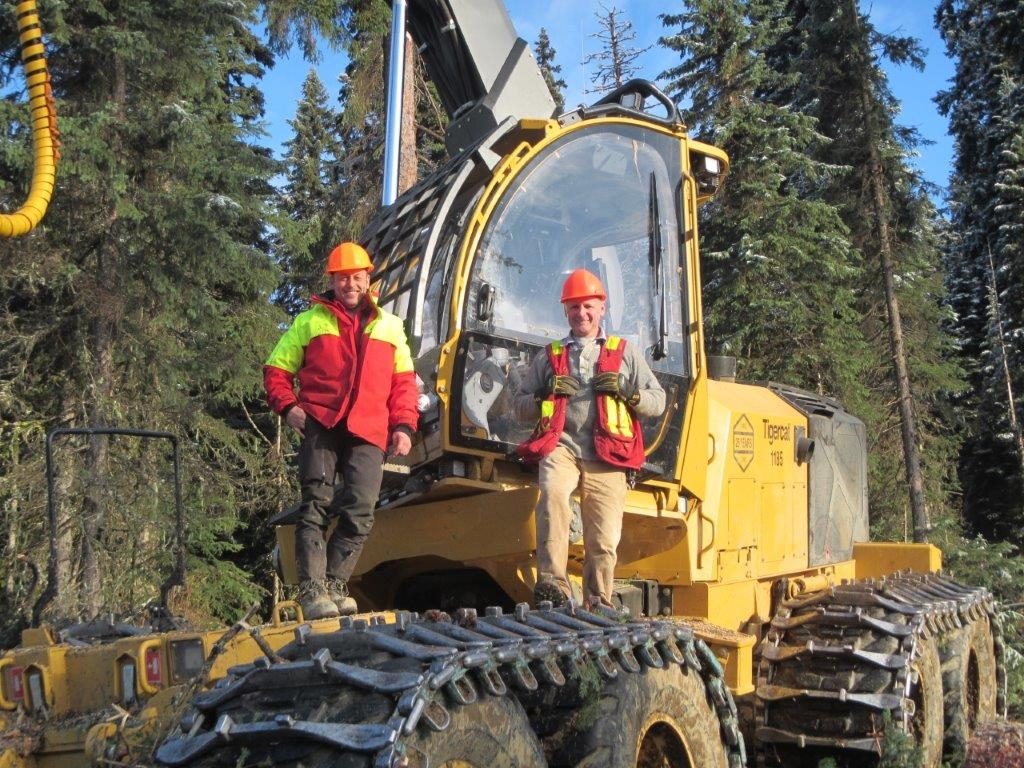
New Gear
Harvesting
New Gear
Knowledge is money: B.C. logger finds low-hanging fruit using info provided by telematics
[SPONSORED CONTENT]
With over 60 machines, more than 40 actively involved in daily logging operations, small changes can have a big impact on Greg Jacob’s bottom line. Take machine idling for example. FPInnovations suggests that reducing idling by one hour per day for a feller buncher would save upwards of $600/yr in fuel alone.
Doing the same on skidders and processors would net anywhere from over $300/yr to $450/yr. Across a fleet of 60 machines, that can net $30,000/yr of additional margin from fuel, more if machine wear and tear are included. Given the tight margins outlined in CFI Magazine’s 2016 Contractor Survey, that’s significant.
To Jacob, it’s also low-hanging fruit. Jacob owns Lo-Bar Log Transport, a large BC Interior contractor that harvests 1 million cubic metres annually, including road building and road maintenance to support that work. Following the mantra that you can only improve what you measure, the seasoned logger added telematics systems to 10 of his bunchers and processors this past spring. A major Tigercat client, he added the manufacturer’s RemoteLog telematics solution to all of his D-series track machines, and will expand to his older C-series models when that software version is available.
“We wanted to identify efficiencies and deficiencies in the way we operate, which is what these systems are best geared for. We had ideas of where we could improve, but no data to prove it and no way to measure success once we made changes.”
Idle thoughts
That changed this spring, and Jacob says some simple and easy opportunities presented themselves quickly. RemoteLog uses satellite technology to track and report on machine location, activity, fuel levels and consumption, and diagnostics. It can be used to schedule fueling and maintenance, and alert owners to mechanical issues as they happen. Pre-set reports are also available that can be sent to key staff daily, weekly or monthly. It was within those simple reports that Lo-Bar made its first discovery.
“Right away we saw that idling was way more than we needed for normal operations. The reports allowed us to measure the problem, identify where and when it was happening, and then raise awareness with the operators. We saw a response immediately, and then let the supervisors and operators know the changes were working.”
Jacob’s last comment raises one of the often-overlooked benefits of modern telematics systems, especially in large and remote operations like Lo-Bar. Not only could Jacob and his supervisors identify an opportunity and use data to convince operators of the benefits of change, they could measure the effect of that change immediately, provide feedback to the operators, and monitor regularly to avoid backsliding.
“Something like excessive idling was easy to resolve, and can be 45 minutes a day. That’s not difficult behaviour to change, and it requires very little inconvenience to the operator, yet has a noticeable impact on the bottom line. Now we just have to be sure it stays on our radar.”
Easy to use
Jacob says the system takes very little effort to manage. It is set to email he and his supervisors automated reports, which require only a quick look to spot trends or opportunities.
“The reports are very easy to read - Tigercat did a great job keeping them simple, so we can act on the information. The info we need for that is right there, not buried in mountains of detail.”
Jacob notes that it’s still early on in the implementation process, but says there are other benefits to enhanced operation monitoring beyond continual improvement. For one, machine diagnostics are helping reduce downtime and equipment damage. Key staff are set to receive email alarms when certain conditions arise. Once a code is identified, some troubleshooting can also be done remotely via the system.
Yet in deciding to implement telematics, Greg says it was all about the continual improvement mindset that a successful logger needs to thrive in today’s tight business environment.
“I’ve always been of the opinion that there’s room to improve in any operation, and some time you don’t need to look that hard. You have to be more efficient, work with what you have. The revenue side of this business doesn’t change that much over time, so we need to look at the cost side continually. This helps us do that.”
Lo-Bar has added RemoteLog to all of its Tigercat D-series bunchers and processors.

Easy Trial
Efficient telematics technology is now part of the expected offerings from major forest equipment manufacturers. Tigertcat’s RemoteLog telematics is a satellite data solution that can come on all gear rolling out of the supplier’s plants, and includes a one-year free subscription. Like the Sirius satellite radio system built into many new cars, the hope is customers will see the benefits and keep using the system going forward.
Designed to help loggers see benefits immediately, RemoteLog comes with simple-to-read pre-set reports, which can be customized as needed. Reports are automatically sent to selected staff on a regular basis, and custom notifications or alerts can be sent via smartphone or email. This approach means no operator training or action is required.
Other bells and whistles include:
· Fuel level reports can go to one location to schedule and plan deliveries.
· Worksite maps can be displayed as an overlay on Google Maps.
· Machine locations can be exported to Google Maps to create driving directions, a definite upgrade over the old “once off the highway follow the beaten path” routine.
· Centralized and up-to-date machine hours for the fleet to help plan maintenance.
November 24, 2017 By Tigercat
 Logger Greg Jacob added telematics systems to 10 of his bunchers and processors this past spring.
Logger Greg Jacob added telematics systems to 10 of his bunchers and processors this past spring. Print this page
Advertisement
Stories continue below
Related
Tags